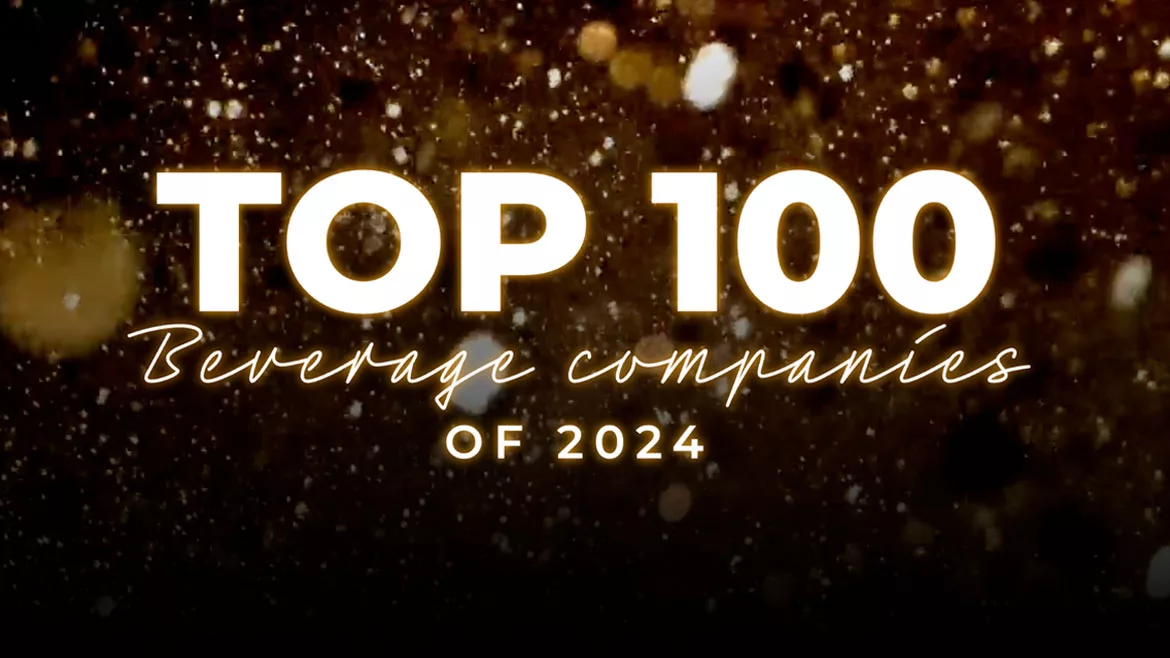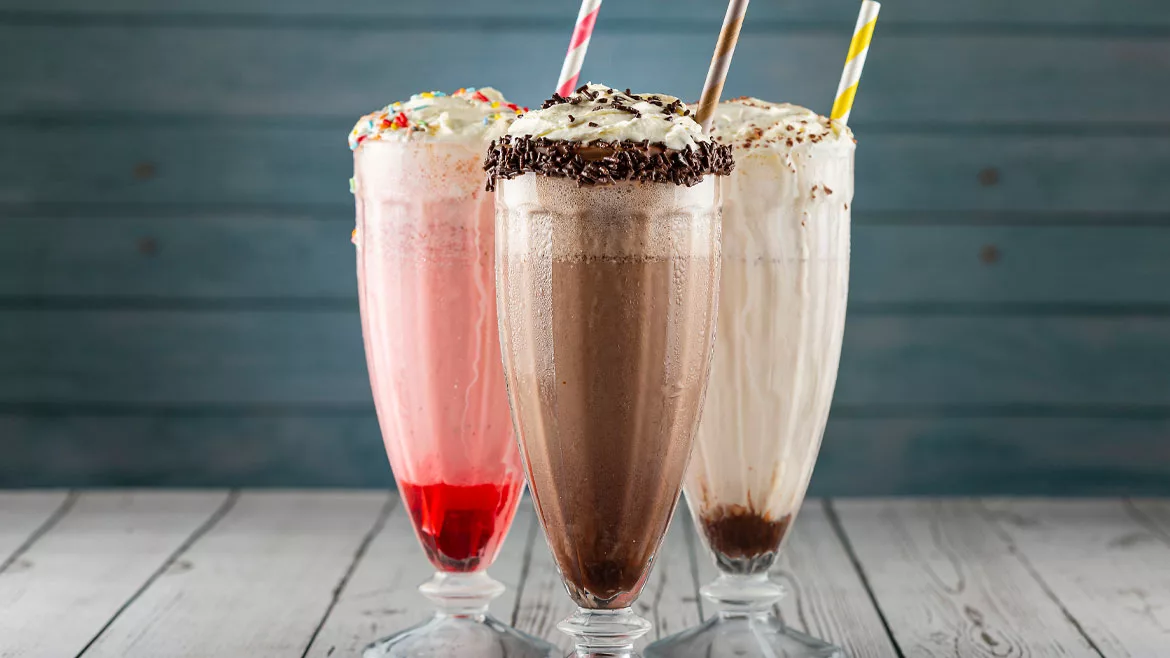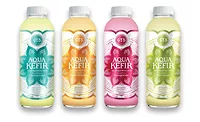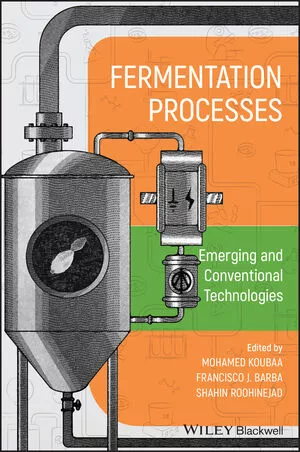Health And Energy Dominate Product Development Trends
2007 Product Development Survey
Health And Energy Dominate Product Development Trends
By CATHERINE PENN
Consumers follow trends — and yes, it’s all about health and energy these days. This year will be good for green tea and pomegranate-flavored beverages, natural flavors and organic ingredients.
Beverage Industry’s 2007
New Product Development Report finds new soft drinks, juices, water and
dairy drinks adding health and energy ingredients, giving them much the
same focus as energy drinks. Even alcohol beverages are looking to include
the words “natural flavors” on their bottles.
This year’s study finds beverage processors more
interested in vitamins, minerals, iron, colloids, organics, caffeine and
other energy producing ingredients compared to a year ago, and in some
cases, interest has doubled. The pace and success rate of new drink
development has increased during the past 12 months, which is a good
springboard for the larger R&D budgets that will be funding initiatives
throughout 2007.
 Soft drinks: cola, then tea
Soft drinks: cola, then tea
Soft drink manufacturers must follow consumer demand
— follow the health trend, follow the research — rather than
try to change consumer behavior. But taste can, in a way, put a
manufacturer back in charge. Where 2006 was all about cola; 2007 is more
about tea.
“CSD products are in decline. Energy drinks and
other more natural drinks, including water, are growth items,” said
one multinational soft drink manufacturer responding to the survey. Another
respondent indicated, “Meeting consumer demand for variety and
better-for-you products,” is the focus.
When soft drink manufacturers assemble their new
product development teams, they place a flavor chemist at the top —
right up with upper management and sales and marketing. The chief executive
officer, if he or she is on a new drink development team, is mostly likely in the role of overseer — behind the flavor
chemist.
Two-thirds of soft drink manufacturers say they do
not include ingredient suppliers in idea generation. Those who do, however,
get new ideas, samples, flavors and trend information from suppliers.
“They offer their ingredients and we brainstorm to see if we can come
up with something to utilize that ingredient,” says one respondent of
the relationship.

In terms of resources, soft drink manufacturers devote less than 1 percent of their workforce to developing new drinks. More than half keep new product development work in house.
In 2006, most soft drink R&D departments worked
with caffeine, flavors, sweeteners, colloids, and, in likely response to
the health trend, vitamins, minerals and iron. On average, ingredients
consume 40 percent of a soft drink’s cost. “The high cost of
CSD ingredients while trying to compete with water and tea is murdering
CSDs,” complains one manufacturer. This year, manufacturers have
ingredients at the top of their wish list for help in new product
development.

Last year, cola was anticipated to be the top selling flavor for 76 percent of soft drink manufacturers. In 2007, however, only 57 percent expect cola to be the top seller. Many are hedging toward tea — regular or green tea. Adding the percentages of those expecting regular and green tea to perform well in 2007, yields a flavor that is only a few percentage points behind cola.
By keeping current with trends, manufacturers can
anticipate changes in consumer behavior. This is essential for marketing
new soft drinks because most take more than nine months to create —
so trends must appear clear on the horizon.

Fifty percent of soft drink manufacturers said they were able to develop new products faster in 2006 compared to 2005. This was achieved through better organization and improved goals and objectives.
Soft drink manufacturers release one out of every two
new drinks they develop, and it costs an average of half a million dollars
to develop a new soft drink from concept to consumer.
Not understanding consumers to the fullest extent is
the most likely reason a new soft drink will fail in the market. “It
was the same old product with a new name,” explained one respondent
for a new product failure. “Taste was targeted to too small of a
consumer base,” another said.
With many soft drink manufacturers now anticipating a
decline in cola consumption, it is not surprising that 36 percent plan to
develop more new drinks in 2007 compared to 2006. By comparison, last
year’s study found only 13 percent of soft drink manufacturers
planning to increase the number of new drinks they developed. Good for the
developers of those new soft drinks will be the 2007 budget — most
can expect more money to be allocated to product development.
A natural category
Our data show that 85 percent of juice processors use
natural ingredients. It makes for a “cleaner, nicer label,”
says one juice processor. “Public perception of them as being better
quality,” indicated another.
Developing new juice drinks is a way to increase
sales, respond to consumer demand, and keep up with trends, especially
wellness.
“Organic products, healthy lifestyles, no
artificial ingredients, no concentrates, no added sugars or
sweeteners,” are the trends cited by one processor.
Marketing, upper management and R&D personnel are
the most important members of a new product development team working on
juices. Juice processors are unlike other categories of beverage
manufacturers in their acceptance of suppliers as partners in new product
development. To juice processors, suppliers have a “crucial
role,” they “provide information on latest trends,” and
let them “know what consumers are currently looking for.”
Another way juice processors are different is their
willingness to outsource R&D — two-thirds are willing to hand
over R&D. Processors devote 1 percent of their workforce to new juice
development.
Ingredients account for one-third of a new juice
drink’s total cost. In addition to the usual ingredients —
juices and flavors — juice processors have been working with
vitamins, minerals, iron, colloids, organics and caffeine.

The data show 2006’s top-selling juice flavors will continue to be popular in 2007, with some growing more than others. Apple, which was No. 1 in 2006, will continue to be the top flavor in 2007 and will be followed by cranberry and pomegranate. Blueberry, which did not rank high in 2006, will be the fourth most popular juice flavor in the months ahead, according to respondents. Interest in acai and mango will grow this year. Grape and orange popularity in juice drinks, however, will decline in the coming months, especially orange.
Forty-three percent of processors say they are able
to develop new juices in less than six months. This means they are in an
excellent position to respond to changing consumer trends. Some processors
improved their turnaround time for creating new juices by including
suppliers in the process, having a better organized R&D, and by adding
staff.
Processors release one of every two juice drinks they
develop, and one in three do not survive in the marketplace. On average, it
costs close to a quarter of a million dollars to develop a new juice drink
from concept to consumer.
Juices are at the mercy of trends, and not staying on
top of them will be reflected in a product’s sales. “Being too
late in a trend,” was the reason one product failed last year, said a
respondent. “Not giving the consumer what they wanted; we gave them
what we wanted,” was the explanation for another flop.
This year, 35 percent of processors will develop more
new juice drinks than they did in 2006. The budget news is great — 47
percent say they will have more R&D money this year than they did in
2006.
Healthy waters
With water, it’s all about marketing. Right
now, the marketing buzzword is health and that includes organic
ingredients, added health benefits and an energy boost. The “market
demands organic and natural flavors,” explained one water bottler who
developed enhanced waters. “Requests from key retailers such as Whole
Foods,” inspired another.

Sales and marketing departments are included on every new product development team at water bottling companies. Upper management also is important and the chief executive officer often has years of experience to offer — 20 or more years is not uncommon in this category. The third most important team member is packaging followed by flavor chemists, customers and R&D.
Overall, suppliers are of little interest to water
bottlers, those who do utilize suppliers in new product development find
them a “significant” source of help. “They supply new
flavor ideas and products to be evaluated by our team members,” said
one respondent of their contribution. “They give us ideas of what is
new and exciting,” said another.
Water bottlers devote about 2 percent of their
workforce to new product development and two-thirds outsource the work.
With the team emphasis on marketing and the willingness to outsource, the
lack of interest in suppliers suggests suppliers may be the ones who need
to approach water bottlers rather than wait to be approved. Ingredients
account for 22 percent of the overall cost of a bottled water drink.
The data show that water bottlers release one of
every three new drinks they develop. Because two of three new drinks are
rejected before launch, this suggests a rigorous internal process of
testing and research.
With marketing permeating R&D, a new water drink
is more likely to fail for reasons other than poor marketing. “Lack
of capital and ability to obtain distribution,” was an example cited
by one respondent.
This year, consumers are demanding more new water
drinks with health benefits. Recognizing this trend, half of all water
bottlers are increasing their R&D budgets and expecting to increase the
number of new drinks they release to market in the coming months.
A buzzing segment
Energy drink manufacturers prefer function over
marketing; but this may be detrimental at product launch because
respondents report the failure of energy drinks to be the highest in the
industry.
Developing new energy drinks is driven by the R&D
department. A flavor chemist is an important member of the team, followed
by sales and marketing. Upper management and nutritionists are equally
represented. Energy drink manufacturers are the least likely of all
beverage categories to include ingredient suppliers in new product
development.

Caffeine, vitamins and sweeteners are the most frequently researched ingredients, while flavors are at the bottom of the list. Forty-two percent of energy drink manufacturers use artificial flavors. Pomegranate and strawberry were the top-selling energy drink flavors in 2006 and are expected to continue in the lead through 2007.
Almost all energy drink manufactures responding to
the survey said they will be purchasing organic ingredients in 2007. These
purchases include herbs, soy, botanicals, yerba mate and milk thistle.
Most energy drink manufacturers improved their new
product development time last year. This was achieved through better
management of R&D such as adding staff or giving them more
decision-making power.
The data show energy drink manufacturers released one
of every three new drinks developed in 2006.
Dairy drinks get a flavor boost
Flavors are critical in developing new dairy drinks,
so why are dairy drink-makers so set in their ways about the flavors they
use? It may be time for more new product development teams to include, and
listen to, a flavor chemist and/or a packaging expert. Right now, the
motivation to develop new dairy drinks has more to do with expanding sales,
profits and product lines than it does with consumer demand.
A dairy drink-maker’s chief executive officer
takes a leadership position on half of all new product development teams,
and often has held that position for 20 or more years.
Dairies devote about half a percent of their total
workforce to new product development and most outsource some of this work.
Dairies are very receptive to help from suppliers. They offer “new
product suggestions utilizing their ingredients,” explains one dairy
drink-maker’s R&D representative. They “present what has
worked outside our distribution network, what’s working
internationally, developing flavor profiles for other beverage
manufacturers,” explained another. Suppliers “get us natural
ingredients for the flavors we want to test. They give advice on quantity
and mix for the most flavor and best texture,” said another
respondent.

Two years ago, only 25 percent of dairies included vitamins, minerals, iron and colloids in dairy drinks. In 2006, 53 percent were experimenting with vitamins, emphasizing the power of the current health trend. Dairy drinks producers estimate that 38 percent of a new drink’s total cost can be attributed to ingredients.
Top dairy flavors this year will be chocolate,
vanilla, coffee and eggnog. The data show that chocolate-flavored dairy
drinks will decrease slightly in 2007 as a preference for coffee is
anticipated. Just as soft drink manufacturers will be launching
tea-flavored drinks, dairies will be decreasing tea-flavored drinks. Three
of every four flavors used in dairy-based beverages are natural.
Two-thirds of dairies can develop a new drink in six
to nine months, the rest take longer, sometimes as long as a year. Dairies
release one of every two new drinks to market where one of three will fail.
We “could not batch fast enough to keep up with processing,”
explained one respondent of a failure. “Not enough customer education
per the benefits,” explained another, and “Not properly
researched and consumer tested,” was the reason for another flop.

This year, dairies are planning to continue R&D at last year’s pace. Almost all will keep their budgets at current levels.
Beer forced to innovate
Creating new beers is primarily a search for market
share, profits and customer loyalty. “New products have to be
constantly introduced in order to grow market share and profits,”
says one brewer. “Innovate or be left behind,” is another
comment.
The team effort in
developing new beers is dominated by upper management where the chief
executive officer often provides ideas. For the most part, suppliers are
locked out of beer R&D. On the other hand, the few breweries that do
include suppliers report opportunities. “[Suppliers] bring forth
ideas from other producers,” said one brewer. “We will
sometimes bring an idea to them and they may have the answers we need for
an ingredient or even a finished product,” was praise from another.
Breweries devote less than half a percent of their
workforce toward developing new beers and 70 percent keep the work in
house. The management driven R&D team works very well regarding
turnaround time: 50 percent of breweries can develop a new beer in less
than six months. Some brewers even improved R&D development time in
2006. “Better teamwork and forecasting using market trends,”
helped one respondent move things along faster.
Two of every five new beers developed are launched,
but new beers are very susceptible to poor marketing. One brewer explains a
failed beer: “I think the campaign was a flop. Also, I think sales and marketing had tunnel vision and did not
listen to the customer.”
Despite no increase in budget, 42 percent of
breweries will be increasing the number of new beers they create in 2007.
“Brewers like experimenting and we want to provide consumers with a
full complement of beer styles,” said one respondent of the
motivation to introduce new products.
Winemakers control the process
Winemakers demonstrate an innovative and trend-aware
attitude toward creating new wines. One winemaker indicated a motivation to
“meet customer demand, remain innovative and respond to
trends.” Another sees new wines as “entry into new target
markets.”
Consumers are the drivers in developing new wines.
Winemakers develop new drinks through an in-house team approach where sales
and marketing representatives are the most important members. The chief
executive officer, production and finance personnel also are prominent team
members, and the chief executive officer takes a leadership position, often
offering more than 20 years of expertise.
About half of all wineries include suppliers in their
R&D process. “The additions that they create help our company to
consider new ideas,” describes one respondent of the relationship.
“They give me new ideas for innovative products,” explains
another. Wineries devote a little more than 2 percent of their total
workforce to new product development. Wine R&D is typically not
outsourced. Two-thirds of winemakers can develop a new product in six to 12
months; the remainder need more than 18 months.

Half of all wine makers report that they have never had a failure. This research suggests that new wines R&D will remain on cruise control in the coming months — no accelerated timetable and no additional funds.
Spirits turn to new flavors
New product development is seen as a way for
distilleries to reinforce brands and ensure market leadership.
“It’s cheaper to develop new brands
than to buy new companies,” explains one distillery.
Sales and marketing personnel offer ideas for new
alcohol beverages and lead new drink development teams. Fifty-seven percent
of distilleries get new drink ideas from suppliers who “tell us of
future trends and consumer interest.”
Flavors are the most important ingredient for
distilleries. In 2006, top-selling flavors were apple, raspberry, cherry,
lemon, lime, passion fruit and pomegranate. This year, top flavors will
include apple, grape, lime, pomegranate, cherry, passion fruit, peach and
pear.
Currently, distilleries are equally split between
adding natural flavors vs. artificial ones. Due to consumer demand,
two-thirds will be increasing their use of natural flavors in the coming
months. “It’s easier to get government approval [with natural
flavors] rather than artificial,” explains one distillery. “For
the label — it’s what consumers will read,” is another
reason to go natural.
The data show that it takes distilleries about a year
to develop a new drink and that one of every two drinks developed are
released to market where one in five do not succeed.
Poor marketing can really sink a new spirit.
“Consumers didn’t know what it was and there was little to no
advertising,” explained one respondent of a new product failure.
Organic leads coffee and teas
Coffee and tea-makers are in full compliance with the
health and organic trend. “We just want to provide consumers with a
new, healthy drink alternative. It is important to remain innovative
because once you have consumer loyalty, they are usually expecting you to
create something new for their palette,” said one coffee producer.
Green tea and tea in general were the top-selling
flavors in the category in 2006, and will continue to be in 2007. Blueberry
also is popular. Apricot and pomegranate will be popular in 2007, replacing
raspberry and lemon’s success in 2006. Currently, flavor usage runs
56 percent natural and 44 percent artificial. These processors plan to
increase their use of natural flavors in response to consumer demand.
Ingredients account for about 30 percent of a
finished product’s overall cost. Almost all coffee and tea-makers can
turn around a new drink in less than nine months and 40 percent improved
their turnaround time last year by being better organized. One made things
faster by “improving supplier network — we got more experience
in working with some ingredients.”
Coffee and tea-makers release two of every three new
beverages to market, and one of three do not succeed. In 2007, 40 percent
of coffee/tea makers plan to increase the number of new drinks they
develop. Half will be increasing their R&D budgets this year.
Methodology
Beverage Industry’s 2007 New Product Development Survey has a 95 percent confidence
level with a ±5 confidence interval. In terms of product categories,
41 percent of the sample process juice and 32 percent are water bottlers.
Thirty percent create energy drinks, 28 percent are soft drink
manufacturers, and 23 percent make coffee and tea. Twenty-two percent offer
sports drinks, 18 percent are brewers, 18 percent are dairies, 10 percent
make wine, and spirits are made by 8 percent of the sample. Many processors participate in more than one
category.
In terms of job function (and some respondents had
more than one job description), management accounts for 45 percent of the
sample and 40 are in sales and marketing. Sixteen percent are from R&D,
15 percent from quality control, 11 percent are production, and 9 percent
are purchasing.
In terms of annual sales revenue, 31 percent of
processors report annual revenue higher than $500 million, with an average
of 15,500 employees. Sixteen percent say revenue is between $50 million and
$500 million and 17 percent say it is between $10 million and $50 million.
Nine percent report income between $5 million and $10 million and 27
percent say revenue is less than $5 million.
All processors in the study have a business presence
in the United States. Seventy percent have location(s) in the Western
United States, 70 percent are represented in the South, 69 percent in the
Midwest, and 63 percent in the Northeast. In addition, 45 percent have
location(s) in Canada and 27 percent are in Asia. One in four has a
presence in South/Central America and 25 percent are in Europe. Twenty
percent have location(s) in Australasia and 11 percent are in Africa.
Want to know more?
Beverage Industry’s 2007 New Product Development Survey revealed who influences the product development process at beverage companies and the reasons products are most likely to fail when they reach the marketplace.
 |
 |
 |
 |
 |
 |
 |
 |
 |
 |
 |
 |
 |
Looking for a reprint of this article?
From high-res PDFs to custom plaques, order your copy today!





